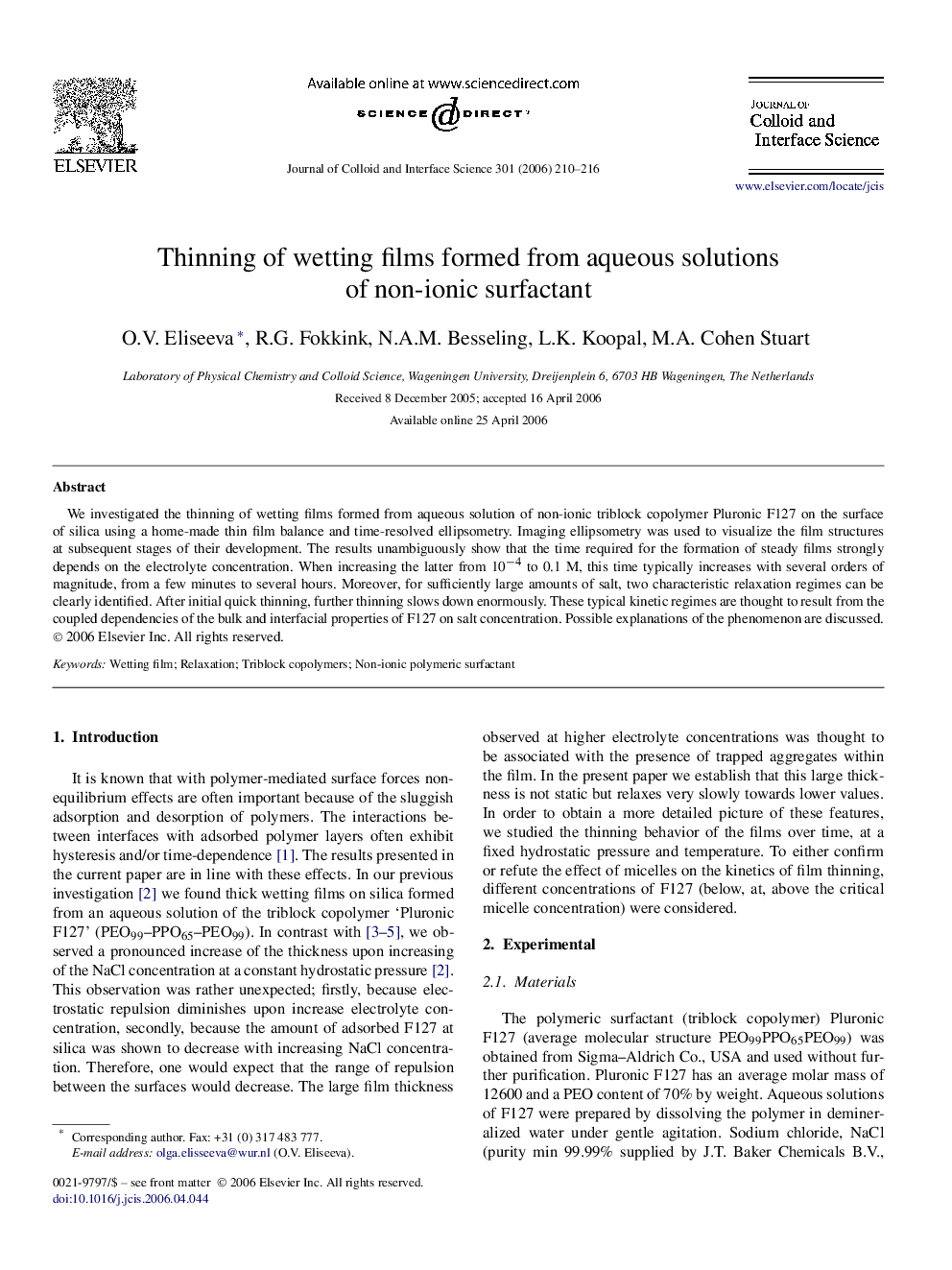| Article ID | Journal | Published Year | Pages | File Type |
|---|---|---|---|---|
| 612728 | Journal of Colloid and Interface Science | 2006 | 7 Pages |
Abstract
We investigated the thinning of wetting films formed from aqueous solution of non-ionic triblock copolymer Pluronic F127 on the surface of silica using a home-made thin film balance and time-resolved ellipsometry. Imaging ellipsometry was used to visualize the film structures at subsequent stages of their development. The results unambiguously show that the time required for the formation of steady films strongly depends on the electrolyte concentration. When increasing the latter from 10â4 to 0.1 M, this time typically increases with several orders of magnitude, from a few minutes to several hours. Moreover, for sufficiently large amounts of salt, two characteristic relaxation regimes can be clearly identified. After initial quick thinning, further thinning slows down enormously. These typical kinetic regimes are thought to result from the coupled dependencies of the bulk and interfacial properties of F127 on salt concentration. Possible explanations of the phenomenon are discussed.
Related Topics
Physical Sciences and Engineering
Chemical Engineering
Colloid and Surface Chemistry
Authors
O.V. Eliseeva, R.G. Fokkink, N.A.M. Besseling, L.K. Koopal, M.A. Cohen Stuart,
